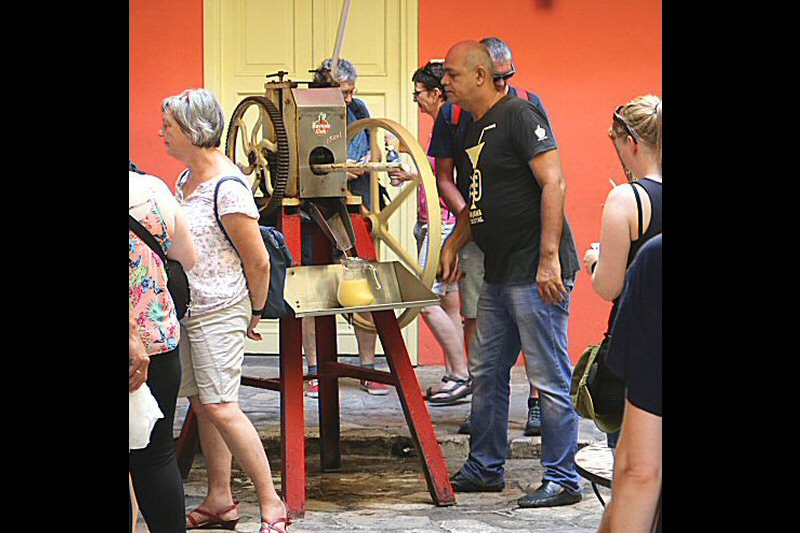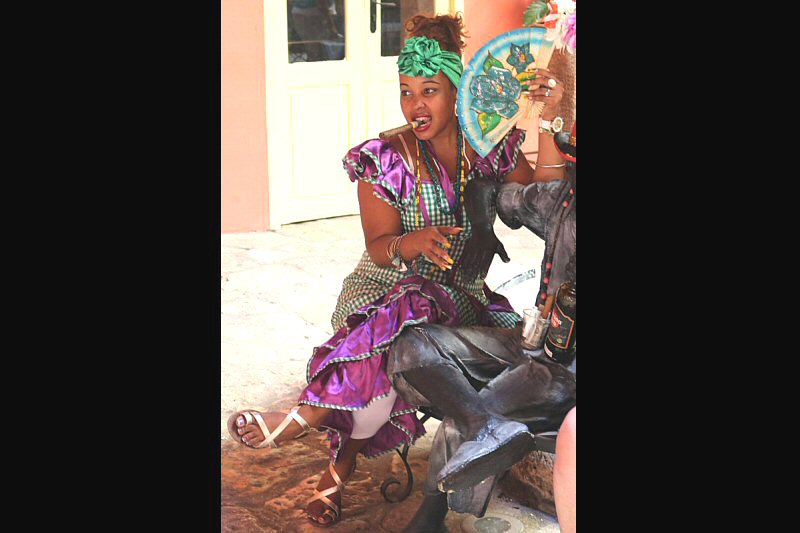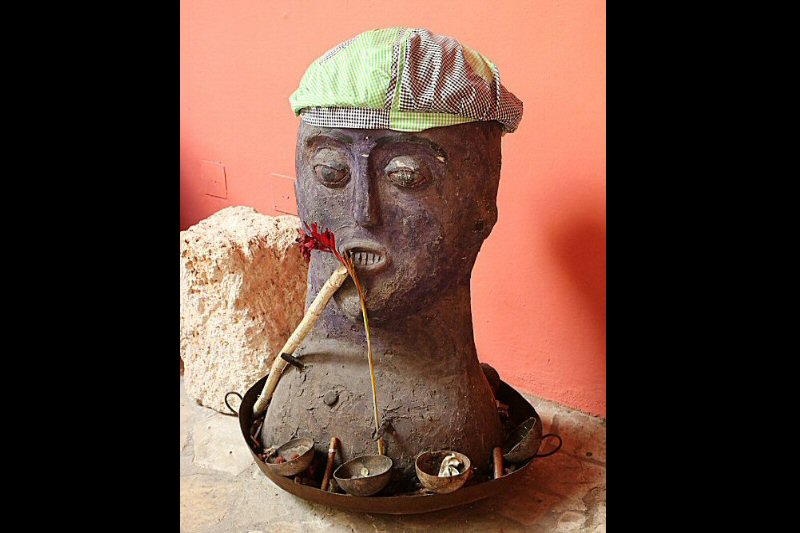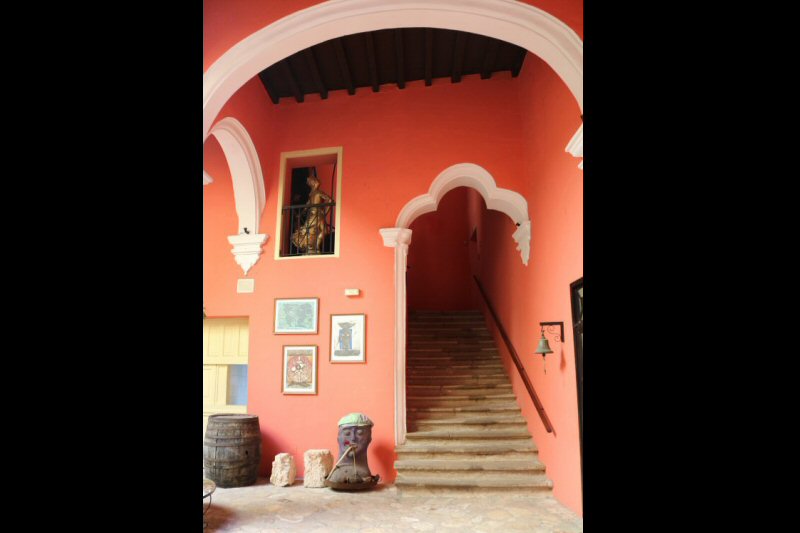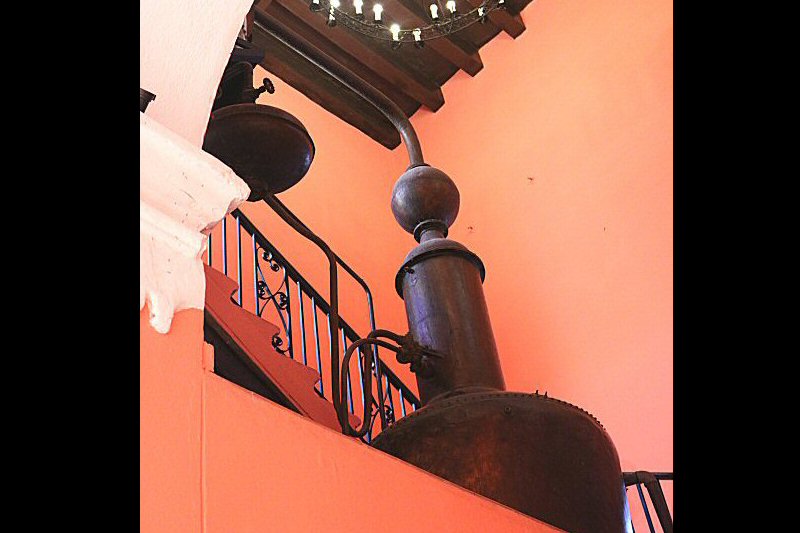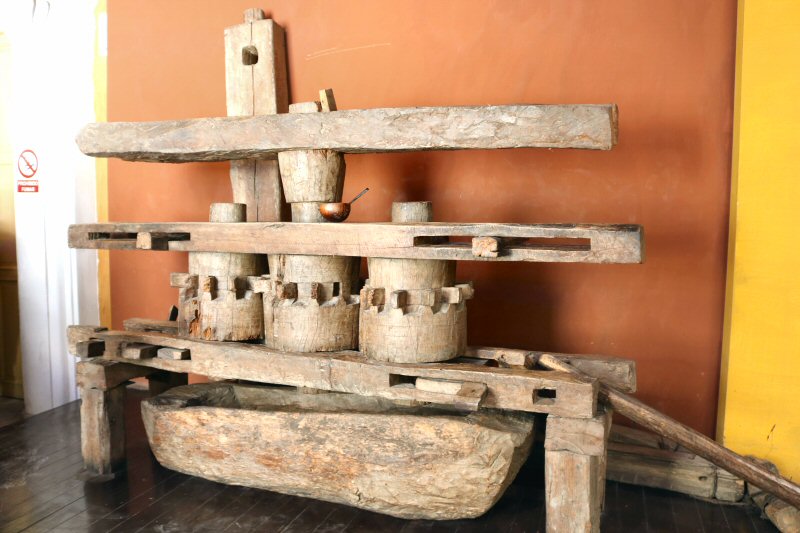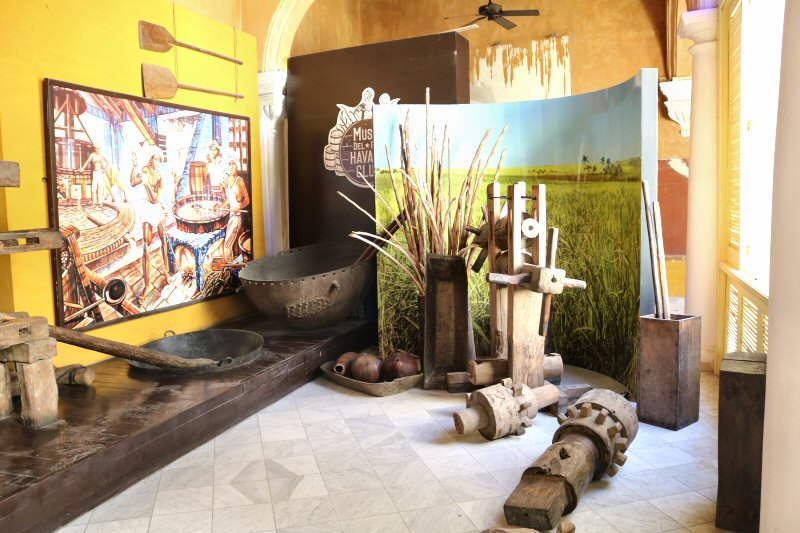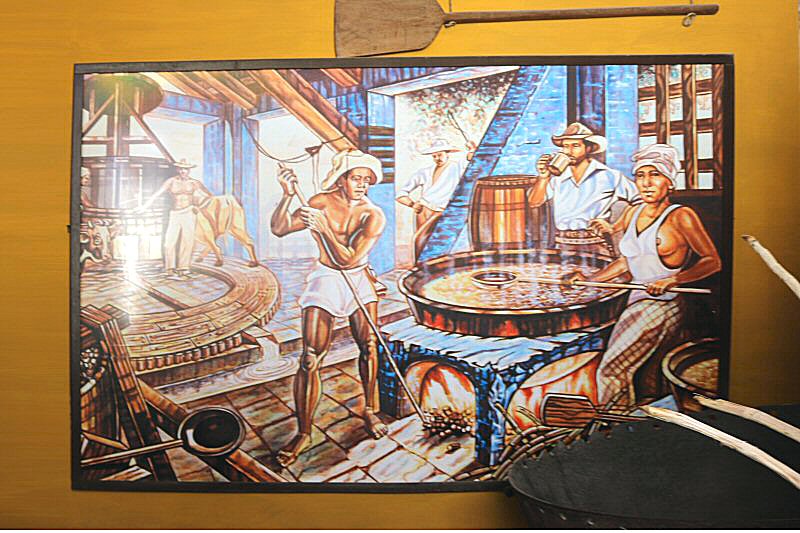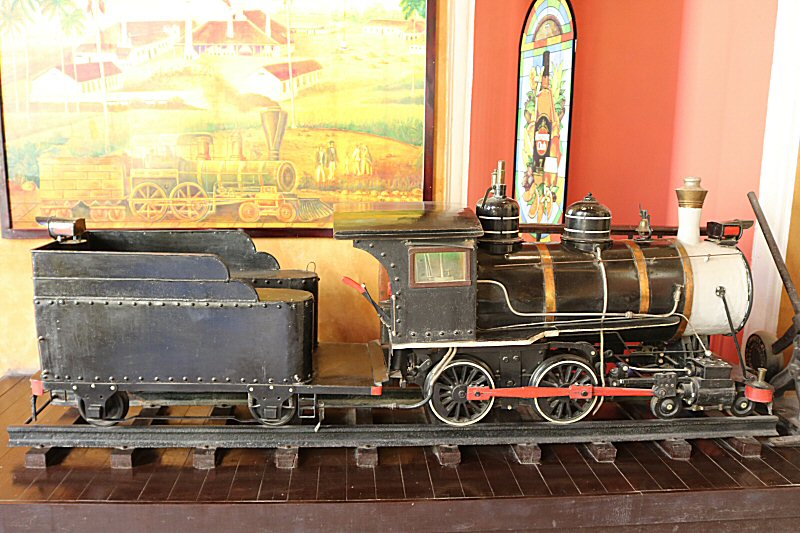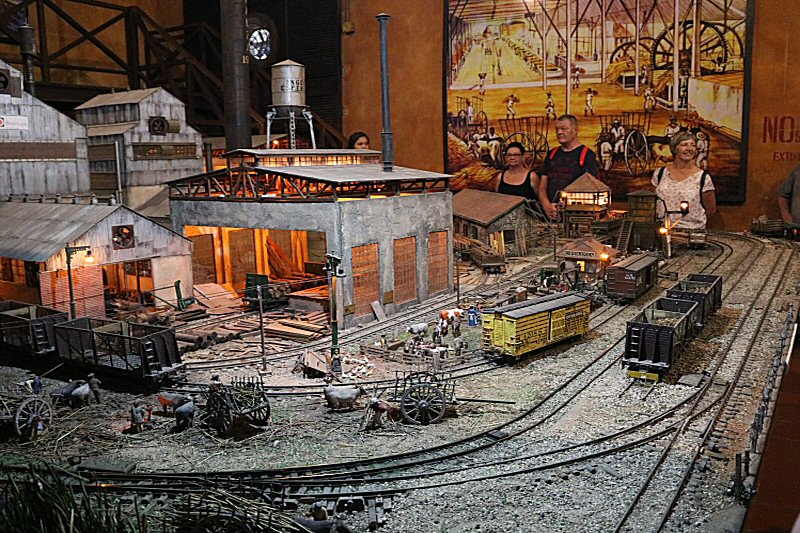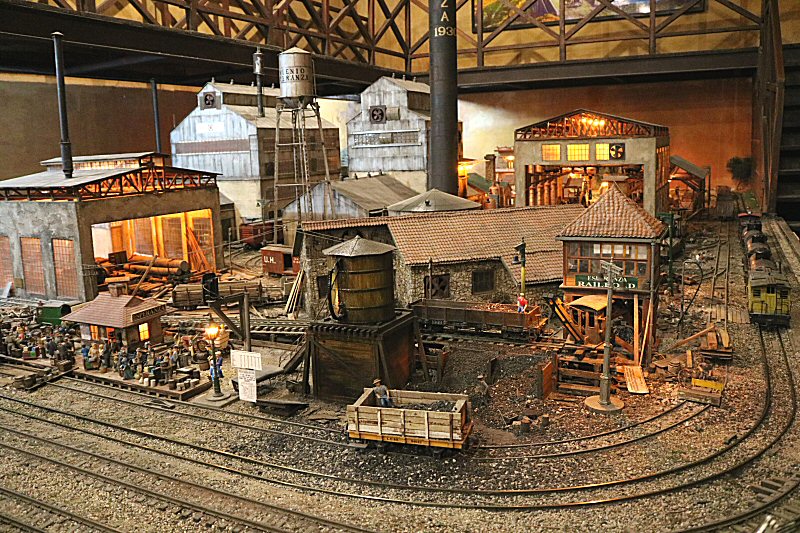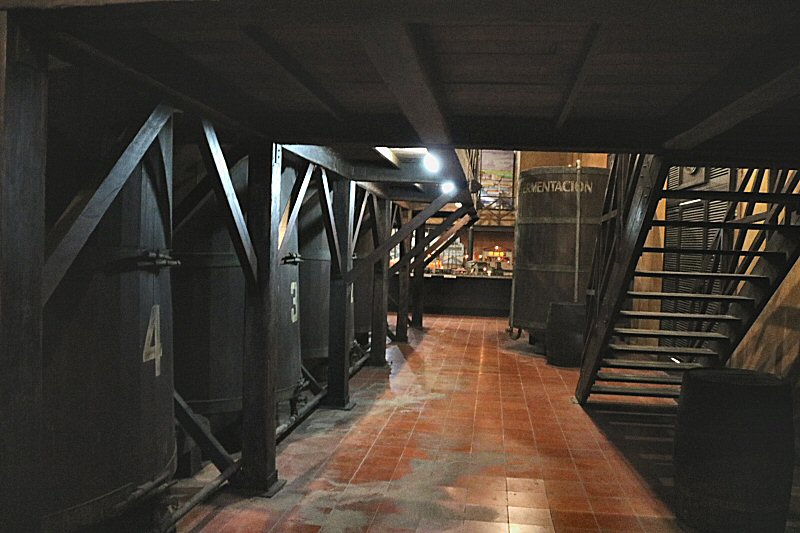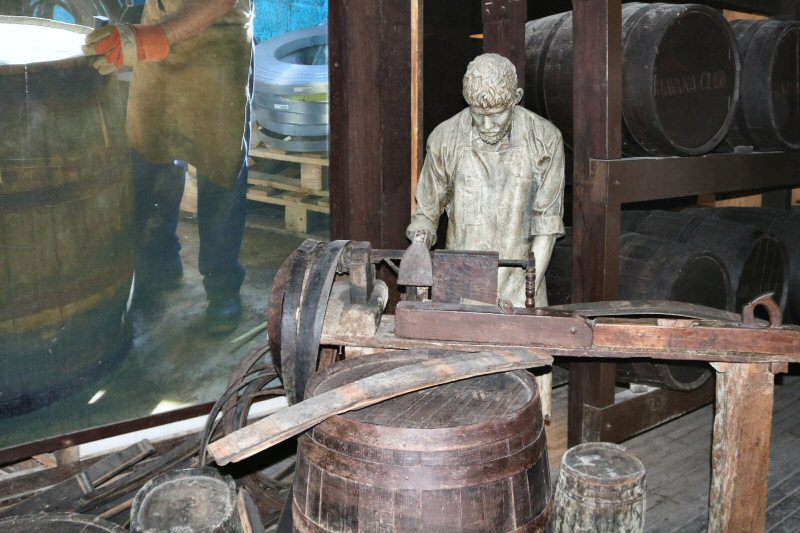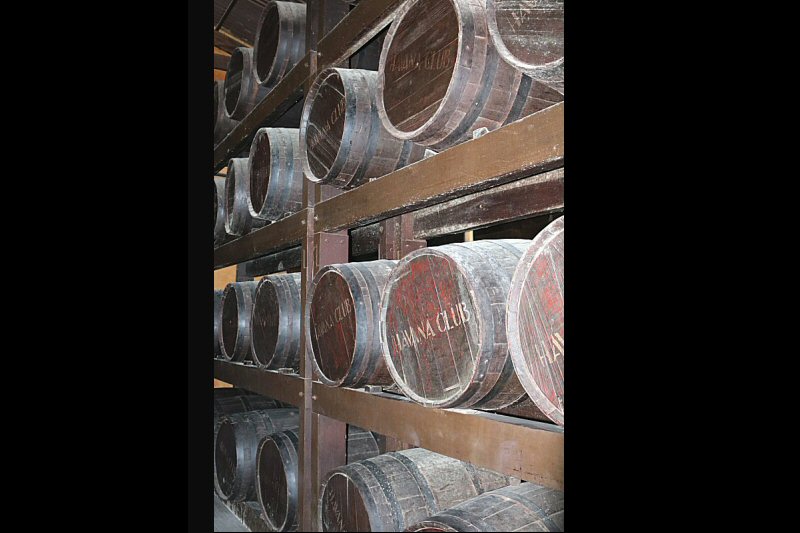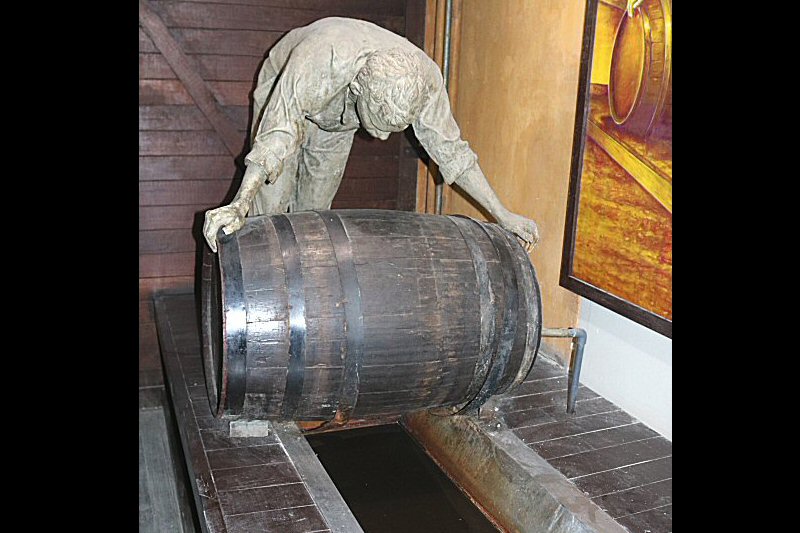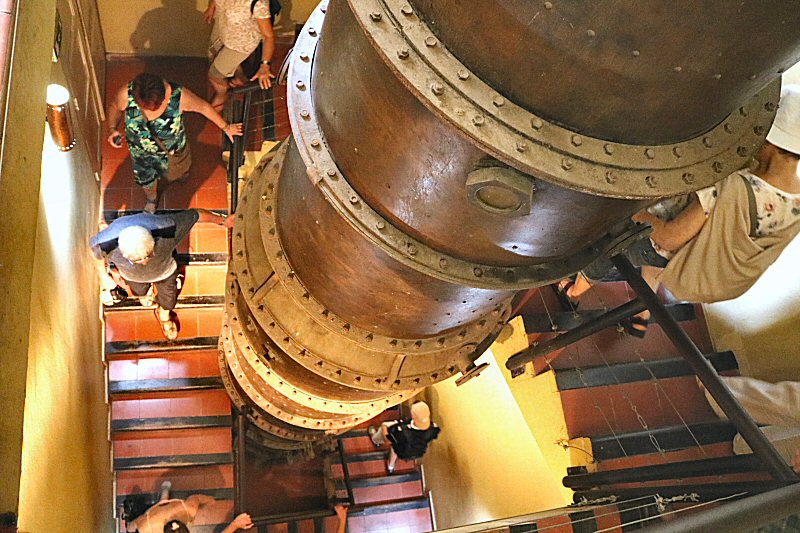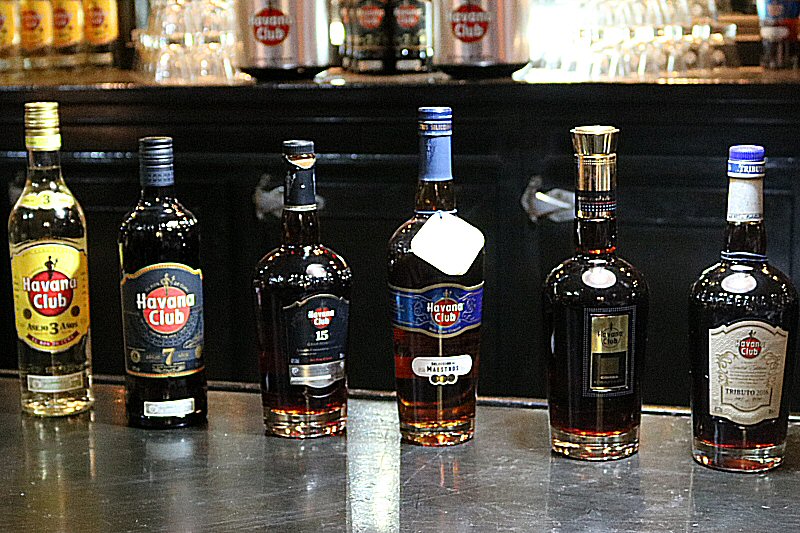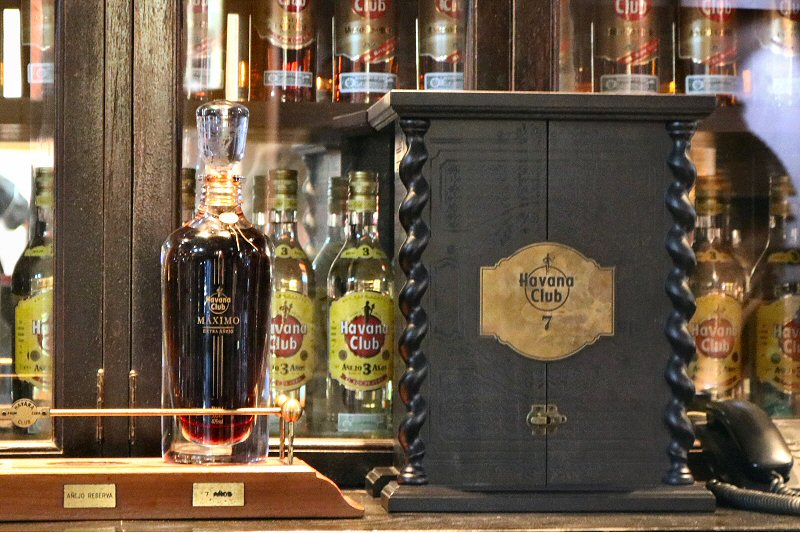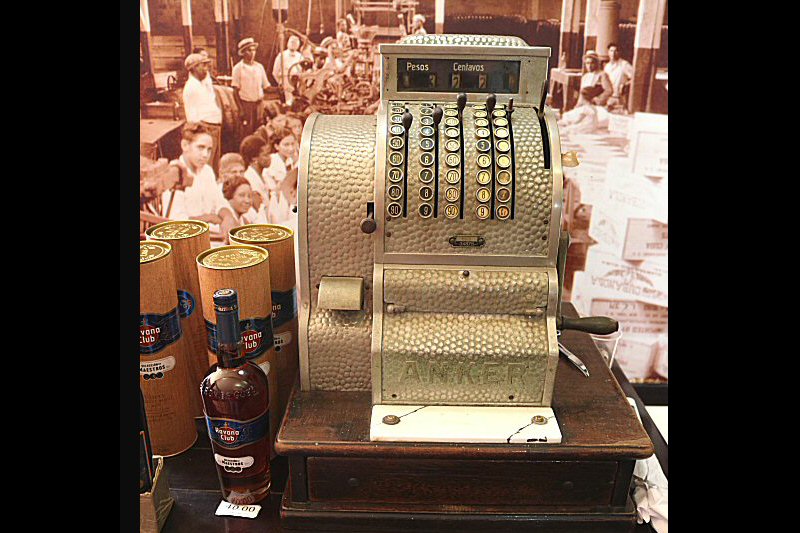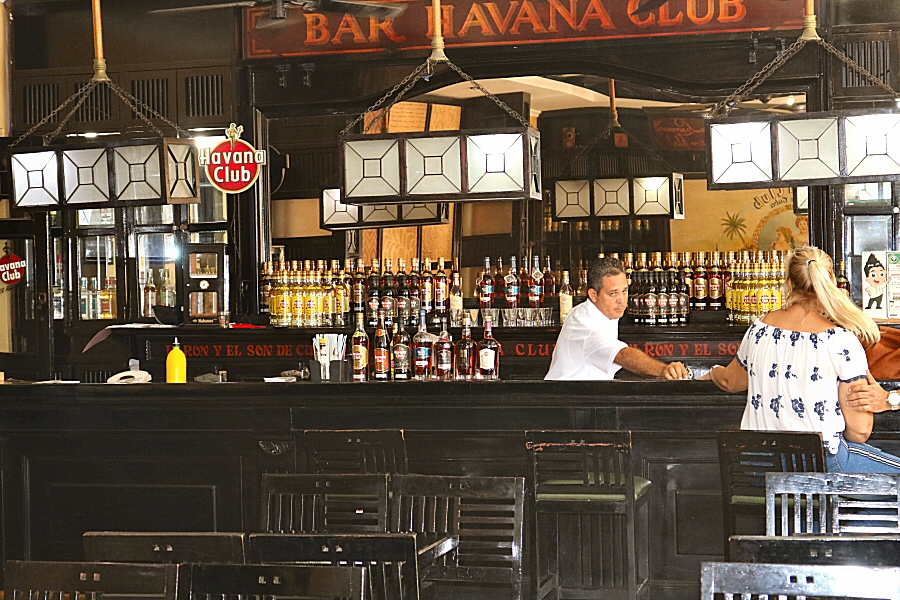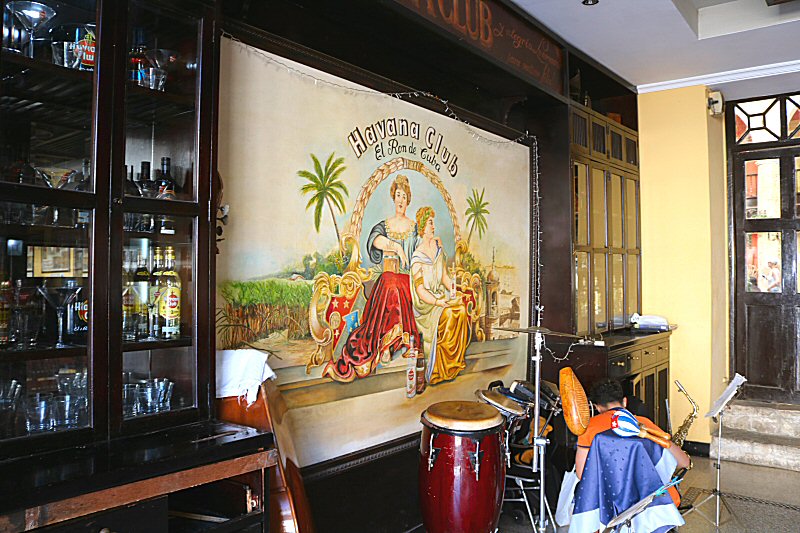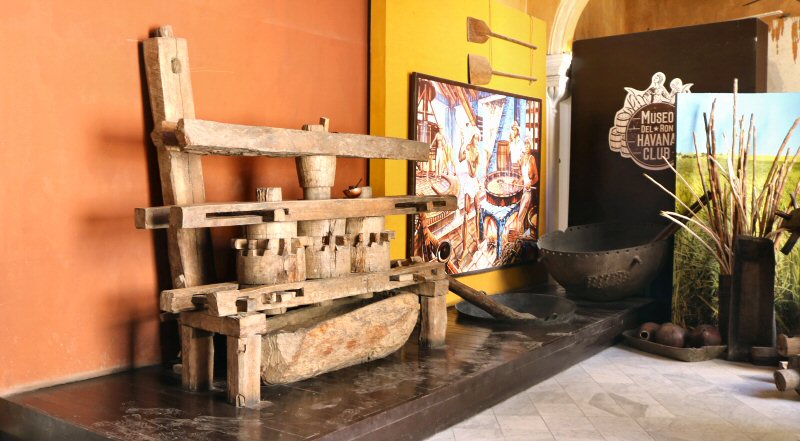

GUIDED TOURS
The frequency of the guided tours depends on the size of the tourist group, usually being repeated every 30 to 60 minutes. After crossing the wide hallway where the ticket office stands, the visitor will enter the inner courtyard, typical of Cuban colonial architecture. When the visitor will be waiting in the shady patio and supe any rum cocktail, or tasting the guaravana, a mixture of guarapo (sugarcane juice), orange juice and rum, that somebody from the staff will prepare by using an outmoded machine to squeeze the sugar cane stick, the ringing bell that is next to the wide staircase, will start the museum tour.
Following the guide up to the upper floor,
the visitor will reach a gallery where the guide
will give the first information about the rum
production centuries ago in front of an
authentic mule-driven cane mill, used in the
earliest sugar refineries. The visitor can even
taste the sugar cane juice, guarapo. The process
of producing molasses is illustrated on a
drawing at the wall. There are also some cauldrons
and some tools remained from a sugar cane mill,
but the second most striking feature in the room
is the accurate model of a historical steam
locomotive that was used in transporting the
sugarcanes.
Then the visitors will be invited to the
cinema hall of the building where they will
watch a movie that gives a brief explanation of
the history of the sowing and harvesting of the
sugarcane, the use of the slave labor in the
sugar cane plantations and the sugar mills, and
the sugar industry in Cuba in the eighteenth and
nineteenth centuries.
In the next step of the museum tour, the
visitor will enter a dark hall where the
excellence of the model of a sugar refinery and
rum distillery will stun the eyes. The visitor
will see all the details of the transport of the
sugarcane by wagons from the fields to the
refinery. The smoke rising from the chimney, as
well as the light of the street lamps and the
talk of the station staff with the families of
the workers on the station platform, bring great
realism to the model. It is the work of the
Cuban model maker and designer García Driggs,
and it is the reproduction of the Esperanza
sugar refinery in Puerto Rico from 1930.
The corridor leads to the dark
fermentation and distilling rooms where the
visitor will see oak fermentation casks,
gleaming copper distillation columns, and pipes
that transport the aguardient (a generic term
for alcoholic beverages that contain between 29%
and 60% alcohol by volume) into various tanks.
This place is also the ageing cellar where the
rums mellow in the oak casks for a long period,
awaits that the Maestro Ronero (rum master)
would come to a decision about their quality.
The museum tour will continue with the next dark
hall with many huge casks in that the
craftsmanship in the production of the oak casks
is highlighted by life-size display figures.
These oak casks that were arranged regularly in
an order, are necessary for the aging process of
the qualified rum.
You will take the spiral staircase around
a huge distillation column to access the tasting
room on the ground floor. It is the final step
of the museum tour, where you will receive the
complimentary shot of 7-year-old rum at the
immense wooden bar, reminiscent of a 1930s bar.
The guide will give information about different
brands of Havana Club Rum, according to their
years of aging: Añejo Blanco, Añejo 3 Años,
Añejo Especial, Añejo Reserva, Añejo 7 Años,
Gran Añejo 15 Años and Máximo. On the panel at
the wall the visitor can read and take a photo
of the receipts of different cocktails, made by
rum, such as the Mojito, the Cuba Libre and the
different types of Daiquiri, as recommended by
the company.

